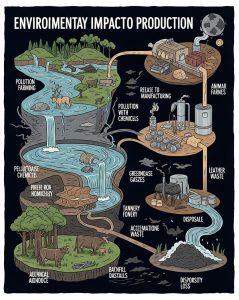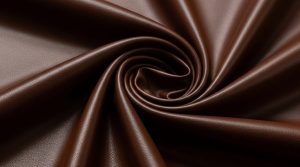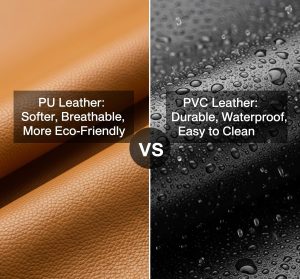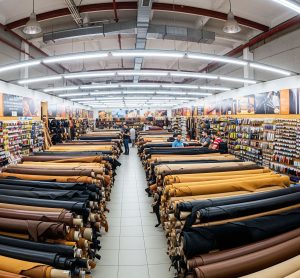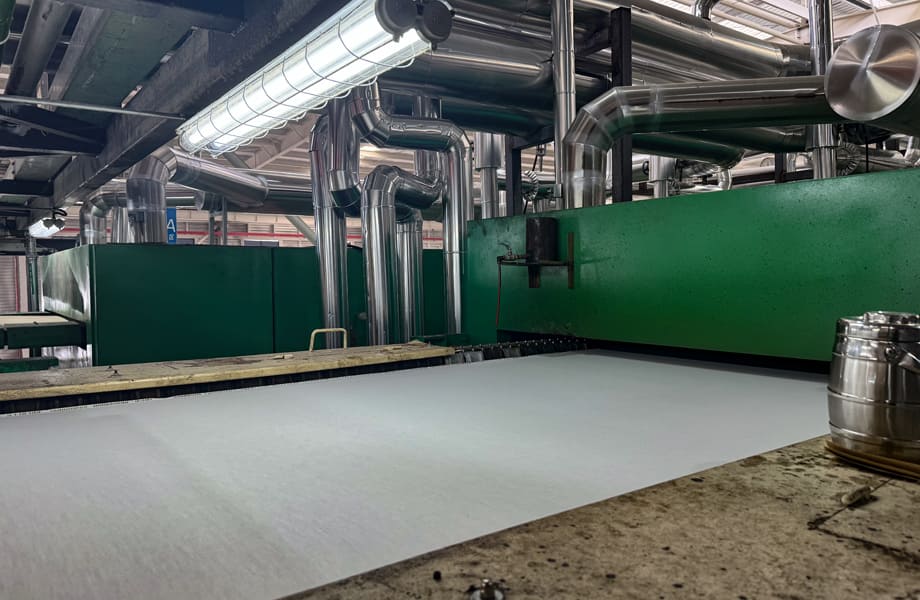
Ever looked at that sleek, leather jacket in the store and thought, “Wow, I could look like a rock star… if only it didn’t cost an arm and a cow?” Enter PU leather, the stylish savior for both your wallet and your conscience. PU leather may sound like something straight out of a sci-fi lab (and honestly, it kind of is), but it’s really just a clever way to get all the glam of real leather without any of the guilt—or the hefty price tag. So, let’s break it down and uncover the science behind this animal-free, budget-friendly material that’s taking over fashion, furniture, and maybe even your wardrobe!
Breaking Down PU Leather: The Science Behind the Material
PU leather, short for polyurethane leather, is a synthetic material designed to resemble genuine leather in both appearance and texture. The “PU” in its name refers to polyurethane, a polymer that is used to coat a fabric base, usually polyester or cotton. This coating process gives PU leather its smooth, leather-like surface. As a completely synthetic product, PU leather does not require any animal materials, making it a popular choice among consumers looking for cruelty-free alternatives. The science behind PU leather focuses on creating a material that is durable, flexible, and affordable, while still delivering the aesthetic qualities that appeal to fashion and design industries.
From Fabric to Finish: How PU Leather is Crafted
The production process of PU leather begins with a fabric base, which can be natural, like cotton, or synthetic, like polyester. This fabric is then coated with a layer of polyurethane, which can be textured and colored to resemble genuine leather. After the base coating, the material undergoes various treatments, such as embossing and finishing, to further enhance its durability and visual appeal. These treatments allow manufacturers to produce PU leather in a wide range of finishes and colors, making it a versatile choice for everything from furniture to fashion accessories. Unlike traditional leather, PU leather is highly customizable, offering both variety and consistency in production.
PU Leather vs. Real Leather: Key Differences Explained
Although PU leather is designed to mimic the look and feel of real leather, there are several key differences between the two. The most obvious distinction is that PU leather is entirely synthetic, while real leather is made from animal hides. This gives PU leather an ethical advantage, as it avoids the environmental and animal welfare issues associated with traditional leather production. Additionally, PU leather tends to be more affordable and easier to maintain than real leather, as it is resistant to water and stains. However, genuine leather often ages better, developing a rich patina over time, while PU leather may crack or peel after extended use. Ultimately, the choice between PU and real leather depends on the buyer’s priorities in terms of ethics, cost, and long-term durability.
PU Leather in Everyday Life: Versatility and Value
PU leather, or polyurethane leather, has become a staple in many aspects of daily life due to its versatility and value. Found in products ranging from jackets and handbags to car seats and furniture, PU leather offers the luxurious appearance of real leather at a fraction of the cost. Its synthetic nature allows manufacturers to craft it in a variety of colors, textures, and finishes, giving consumers a wide range of stylish options. In addition, PU leather is lightweight, water-resistant, and easy to clean, making it a practical choice for items that endure regular use. This combination of affordability, durability, and aesthetic appeal has made PU leather a go-to material in both fashion and interior design.
Ethics and Affordability: The Appeal of PU Leather in Modern Fashion
One of the biggest draws of PU leather in the fashion industry is its ethical and affordable nature. As a cruelty-free alternative to traditional leather, PU leather eliminates the need for animal products, aligning with the growing demand for more sustainable and humane manufacturing practices. For fashion-conscious consumers, it offers the chance to enjoy the look and feel of leather without contributing to animal harm. Beyond ethics, PU leather’s lower production costs make it accessible to a broader market. Designers can create trendy, high-quality pieces that don’t break the bank, allowing consumers to stay fashionable without compromising their budget or values. This balance of ethics and affordability has positioned PU leather as a favored choice in modern fashion, catering to both conscious and cost-aware buyers.
Conclusion: The Future of Fashion—Stylish, Ethical, and Affordable
In a world where conscious consumerism is becoming the norm, PU leather shines as the perfect marriage of style, ethics, and practicality. Whether you’re decking out your wardrobe, upgrading your home décor, or outfitting your car, PU leather proves that you don’t need to sacrifice luxury for sustainability. Its affordability, durability, and cruelty-free production have made it a go-to for designers and shoppers alike, redefining what modern fashion and design can be. As the demand for sustainable options continues to grow, PU leather is set to remain a key player, proving that great style can go hand-in-hand with responsibility—because who says looking good can’t also feel good?




